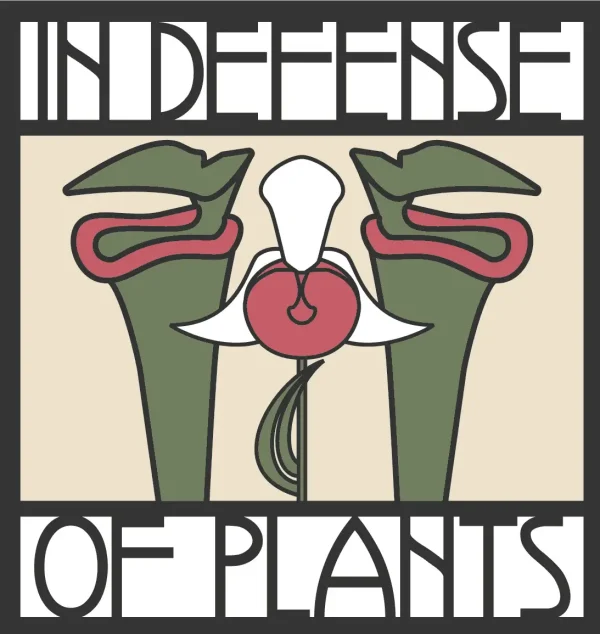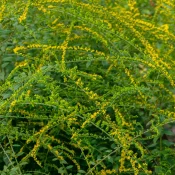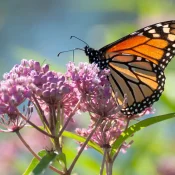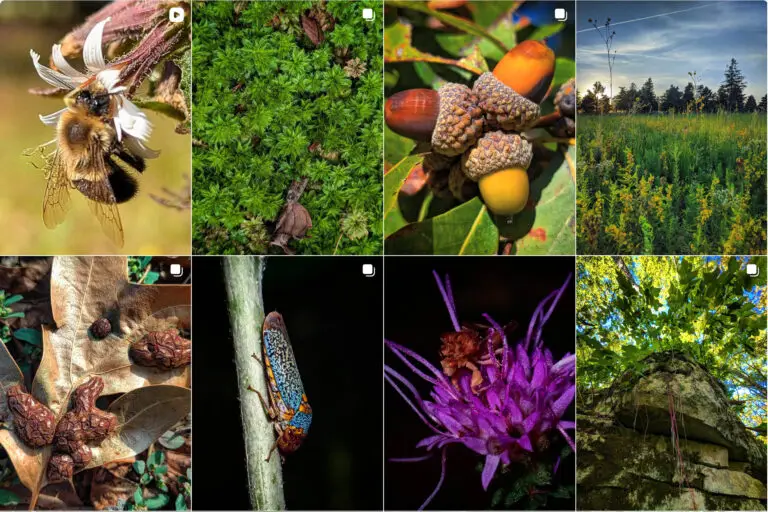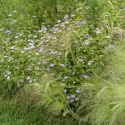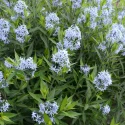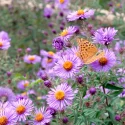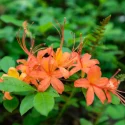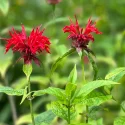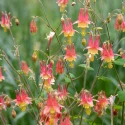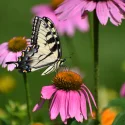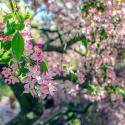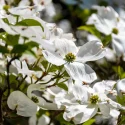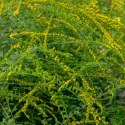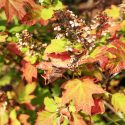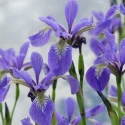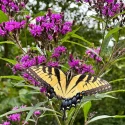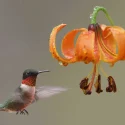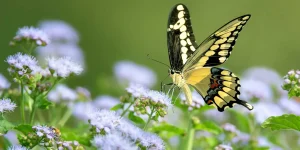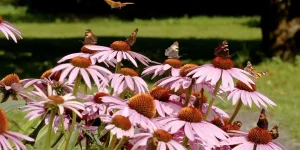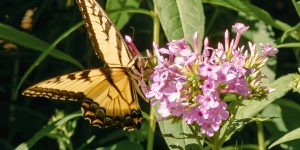Interview with Dr. Matt Candeias, In Defense of Plants
Allow me to get personal for a moment: this interview is a total fan-girl moment for me. Dr. Matt Candeias, the voice behind In Defense of Plants, has spent years making plant science feel alive and accessible—on Instagram, YouTube, and in more than 500 podcast episodes. His curious, down-to-earth storytelling reminds us that plants aren’t background scenery; they’re the main characters, each with its own wild and surprising story.
In our interview, Matt shares how one unlikely place—a sand and gravel pit!—sparked his lifelong fascination with plants. It’s a good reminder that inspiration often starts in small, ordinary places.
Thanks so much for the time Matt! Can you tell us a little about yourself and what first got you interested in plants?
I was born and raised in the forests of Northeastern North America. I was always an outdoor kid, running around until the sun went down and sometimes even after. As a kid I was obsessed with dinosaurs, insects, and reptiles. I never really paid any attention to plants.
My mom, grandfather, and great grandfather were avid gardeners, but it didn’t catch my interest until I started doing mine reclamation work as an undergrad. The projects I was somehow put in charge of were very focussed on creating habitat for insects and to be good at my job, I had to read a lot about establishing native plant communities that the insects could use as habitat.
The more I dove into the botanical side of things, the more obsessed I became. Plants felt so alien to me and that was a really exciting hook.
Was there a particular plant, place, or experience that first pulled you in?
Yes, and oddly enough that place was an open pit sand and gravel mine. I like to say that to people because it is proof that you never know where or how a fiery passion will be lit for someone. Everyone is different and there is no single way to get people interested in a subject.
For me, it was trying to get blue lupine (Lupinus perennis) to grow in the remnants of a sand and gravel pit. If there was ever a plant that I can point to and say “that started it all,” it would be that one. I wrote about that experience extensively in the first chapter of my book, but for now I will just say growing it consumed me. It was all I thought about when I was awake and when I closed my eyes at night, I saw the silhouette of its leaves.
I love that lupine leaves made such an impression; they’ve always reminded me of the cut paper snowflakes kids make at the holidays.

Now, let’s hear about your amazing platform In Defense of Plants. How did it begin?
In Defense of Plants started as an outlet where I could synthesize what I was learning from equally obsessed friends as well as school. It was my way of putting pieces of info together into something more holistic to help me form a better picture of the world around me.
Your podcast has been running for years now. What’s kept you inspired to keep producing new stories week after week? How do you pick topics and interviewees?
I always joke that it’s a selfish endeavor, but it kind of is. I like learning and the opportunity to talk to experts in their field is always exciting because I walk away from every conversation having learned so much!
Finding topics is easy. I just look for experts that study whatever I am interested in from one week to the next. One day I may be geeking out about a specific species or family that is blooming in my garden or that I see on hikes, the next I might find some cool galls on the oak tree in my yard. My next step is to seek out scientific literature on those topics and inevitably I end up reaching out to the scientists that are doing the research. I am also very fortunate that nowadays people often reach out to me with guests or topics, which saves me a lot of heavy lifting and coordination.
You cover everything from carnivorous plants to urban ecology. Are there a few episodes that you think The Plant Native audience would especially love?
This is a tough one to answer. Everyone I talk to gets me so excited about their particular area of interest. I would say some recent episodes of note would be:
- Episode 548 where Dr. Louis Nastasi and I explore the world of gall wasps. It opens the door to the myriad ways native plants support biodiversity.
- Episode 531 with Dr. Desirée Narango explores similar concepts but on a broader ecosystem level.
- Episode 529 with Infectious Disease specialist Dr. James Shepherd. This episode explores the links between ecosystem health, native plants, and disease vectors like ticks and mosquitoes, which have serious consequences for human health and wellbeing.
Thanks Matt! I also love your Adventures series on YouTube—the Appalachia one is my fave.
Now, I’d like to dig into your views and experience on native plants.
You’ve learned from so many plant experts around the world—how do native plants show up in those conversations, and why do they matter?
They show up a lot. Every plant is native somewhere.
I usually aim to talk to people who work with and/or study plants in their native habitats. Native plants always factor into conservation/ecological conversations because you simply don’t have functioning ecosystems without healthy native plant communities. Wherever a plant is native, you can bet there are organisms of all shapes and sizes that have evolved to use that plant. Some may be generalists whereas others may be specialists. Plants that share an evolutionary history with other organisms are always going to have more function in an ecosystem than exotic or invasive species. Period. Hard stop.
Native plants for beginners
Matt’s Native Fall Favorites
My favorite native plants usually change from week to week, month to month. It’s fall right now, so native asters and goldenrods have my attention. That said, I love oaks, I love anything in the milkweed family. Orchids will always be an area of obsession for me.
Many of our readers are just starting their journey with native plants. What advice would you give someone who wants to get more curious about the plants growing around them?
Get a field guide, download iNaturalist, join a native plant club in your area. Just find any way you can to get to know the plants in your neck of the woods. Understanding the diversity of your region is so much fun, and it really helps develop a sense of place.
Of course, be prepared to kill plants no matter what you do. Even the most talented gardeners out there still kill plants. It is going to happen. Try to learn from it rather than let it discourage you. However, you can certainly minimize your chances of killing plants by working with species that are adapted to the light, water, and soil conditions of wherever you are gardening.
In my experience, so many gardeners (native or not) fail with plants because they are trying to do things their garden can’t support. You would be amazed at how localized soils conditions can be. A few blocks from me is a wetland but my soils are bone dry by July and don’t see any rain until mid-fall. Therefore, I can’t hope to grow native wetland plants that can be found literally down the street.
Matt’s Tips for Growing Native
Try to understand your growing conditions. By that I mean, how much sun do you have? How often does it rain? Are there seasonal patterns in rainfall? What kind of soil do you have?
Just because a plant is native to your region does not mean you have the conditions to grow it. Work with your landscape instead of giving yourself an uphill battle.
Have your views on native vs. non-native plants changed over time as you’ve researched and interviewed experts?
I would say it has both hardened and softened over the years. I say hardened because every year, more and more science pours out showing that native plants ARE habitat. They support all other types of life and are crucial for ecosystem function.
At the same time I look out at a world that is just getting in its own way in pursuit of sterile lawns and pest control. I belong to a species that is making life harder to live year in and year out by eliminating the other species that make our cozy lives possible. I will never not advocate for and plant native plants any chance I get.
However, I look at how so many native plant advocates operate, especially on the internet, and I can’t help but desire a softer, friendlier approach. We collectively need to learn how to see the world from other perspectives. I personally have had to come to the conclusion that America simply doesn’t have the kind of gardening culture that responds quickly to the kind of change we want to see.
At best, most average Americans want what they see on HGTV.
At worst, they don’t want any garden at all.
Trying to win these people over with ecological facts is a lost cause and I fear the more aggressive people get about it, the more they harm the native plant movement.
Gardens require work, far more work than running a lawn mower and spraying “weeds” with herbicide. Most want fewer insects in their life, not more. Trying to win these people over with ecological facts is a lost cause and I fear the more aggressive people get about it, the more they harm the native plant movement. I have had to come to terms with the fact that not all non-native plants are bad, nativars can be a gateway into better gardening practices, and that some people are never going to be convinced.
We need to soften our approach, be far more welcoming, remember to meet people where they are at (which is usually less maintenance and more centered on beauty/property value than ecological function), and pick our battles.
Matt, when I say I agree—I mean it, deeply. This softening strategy is why I started The Plant Native.
Also, we did the math: lawns can sometimes be way more work than a native garden. All that time spent mowing and the money spent on buying chemicals add up.
Finally, let’s talk about the future. What gives you hope about where the native plant movement is headed?
The fact that no matter where I go, I see municipalities and larger retail stores stocking and utilizing native plants. Change often happens much slower than we like it to, but the fact that native plants are increasingly being utilized for landscaping projects excites me.
Also, when I get on platforms like iNaturalist and see how many people from all different walks of life are curious enough about the natural world to download an app and upload pictures to figure out what something is tells me that biophilia is there, we just have to get much better about cultivating it in others.
Anything you’d like to add before we wrap up?
Plant native plants! Go easy on local seed sources. Over-collecting seeds from local habitats can really hurt native plant regeneration.
Also, never dig a plant out of the wild unless that plant is going to be destroyed by some form of development. Ethically sourced plants are crucial to sustainable native plant propagation. Also, if you propagate plants, share them with your community. Go to plant swaps, sell them for a reasonable price on Marketplace. Make ethically propagated native plants available!
Thank you, Matt, for sharing your time and insights, and for the years you’ve spent helping people see plants in a new light. We can’t wait to see what you do next on In Defense of Plants. Happy podcasting and planting!
Further information
In Defense of Plants
Listen to 500+ podcast episodes, explore the blog, and buy the book!
Facebook | Instagram

